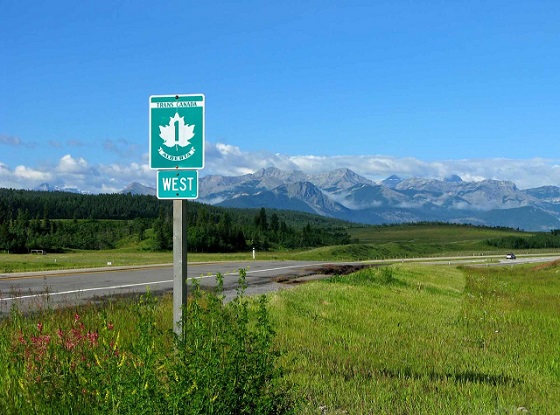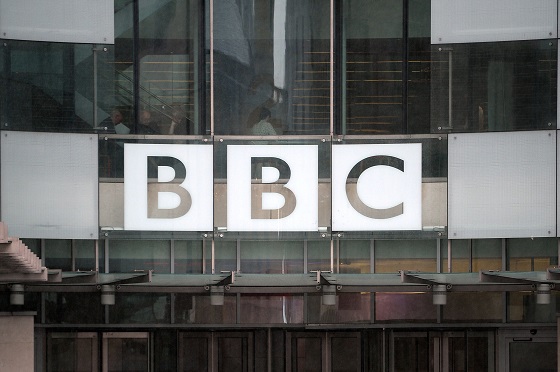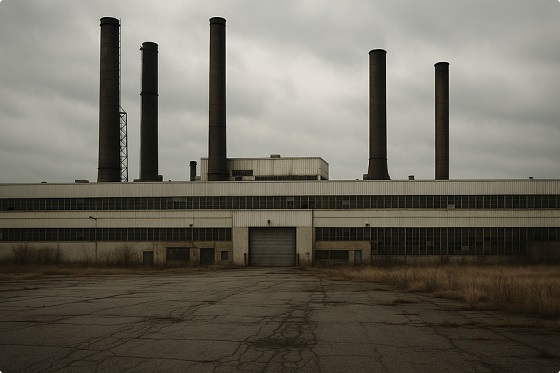Alberta
Alberta pushes back on illegal U.S. tariffs

Alberta’s government is implementing a proportionate, measured response to U.S. tariffs and taking decisive action on internal trade with free trade and mobility agreements.
As part of its non-tariff retaliatory measures, Alberta is altering its procurement practices to ensure Alberta’s government, as well as agencies, school boards, Crown corporations and Alberta municipalities, purchase their goods and services from Alberta companies, Canadian companies or countries with which Canada has a free trade agreement that is being honoured.
“I will always put the best interests of Alberta and Albertans first. These non-tariff actions are measured, proportionate and put an emphasis on defending Alberta and Canada against these economically destructive tariffs imposed by U.S. President Donald Trump, while breaking down restrictive provincial trade barriers so we can fast-track nation building resource projects and allow for the unrestricted movement of goods, services and labour across the country. I understand this is an uncertain time for many Albertans, and our government will continue to do all it can to prioritize Alberta’s and Canada’s world-class products and businesses as we face this challenge together. I also look forward to working with my provincial counterparts to help unite Canada and ensure free and fair trade throughout our country.”
Alberta’s government has also directed Alberta Gaming, Liquor and Cannabis to suspend the purchase of U.S. alcohol and video lottery terminals (VLTs) from American companies until further notice. This will ensure Alberta and Canadian brands take priority in restaurants, bars and on retail shelves.
“We are committed to putting Canadian businesses first. By suspending the purchase of U.S. produced alcohol, slot machines and VLTs, we are ensuring that Alberta and Canadian brands take priority in our restaurants, bars and retail stores. We will continue to take bold steps to support local industries and strengthen our economy.”
To encourage the purchase of stock from vendors in Alberta, Canada and other countries with which Canada has a free trade agreement, the government will help all Alberta grocers and other retailers with labelling Canadian products in their stores. In the coming weeks, Alberta’s government will augment these efforts by launching a “Buy Alberta” marketing campaign. Spearheaded by Minister of Agriculture and Irrigation RJ Sigurdson, this campaign will remind Albertans of their options for local food and the importance of supporting Alberta’s agriculture producers and processers.
“Alberta’s agriculture producers and processers are the best in the world. Although these U.S. tariffs are incredibly concerning, this “Buy Alberta” campaign will put a spotlight on Alberta’s farmers, ranchers and agri-food businesses and support Albertans in choosing goods from right here at home.”
Building on Alberta’s reputation as a leader in removing barriers to trade within Canada, Alberta’s government will continue to push other provinces to match our ambition in providing full labour mobility and eliminating trade barriers through work like mutual recognition of regulations. This will allow for goods, services and labour from other provinces to flow into and out of Alberta without having to undergo additional regulatory assessments.
“While no one wins in a tariff war, this situation underscores the need to develop Canada’s trade infrastructure and the diversification of our trading partners and could be the catalyst to unlocking Canada’s true potential. As we look at how best to support Albertans and our businesses, we must also work to reduce internal trade and labour mobility barriers while expanding markets for Alberta energy, agricultural and manufactured products into Europe, Asia, the Americas and beyond. Albertans and Canadians are counting on us.”
Alberta’s government is also focused on doubling oil production. With U.S. tariffs in place on Canadian energy products, Alberta is looking elsewhere for additional pipeline infrastructure, including east and west, in order to get our products to new markets.
Alberta’s government will continue to engage with elected officials and industry leaders in the U.S. to reverse these tariffs on Canadian goods and energy and rebuild Canada’s relationship with its largest trading partner and ally.
Quick facts
- On March 4, U.S. President Trump implemented a 25 per cent tariff on all Canadian goods and a 10 per cent tariff on Canadian energy.
- The U.S. is Alberta’s – and Canada’s – largest trading partner.
- Alberta is the second largest provincial exporter to the U.S. after Ontario.
- In 2024, Alberta’s exports to the U.S. totalled C$162.6 billion, accounting for 88.7 per cent of total provincial exports.
- Energy products accounted for approximately C$132.8 billion or 82.2 per cent of Alberta’s exports to the U.S. in 2024.
- About 10 per cent of liquor products in stock in Alberta are imported from the United States.
- U.S. products represent a small minority of the beer and refreshment beverage categories; however, a significant number of wines originate in the U.S.
- In 2023-24, about $292 million in U.S. liquor products were sold in Alberta.
- Alberta has been a longstanding supporter of reducing barriers to trade within Canada. In 2019, the province removed 21 of 27 exceptions, including all procurement exceptions, and narrowed the scope of two others. Since then, the province has only added 2 exceptions, which allow for the management the legalization of cannabis.
- Removing party-specific exemptions has helped facilitate even greater access to the Alberta market for Canadian companies in the areas of government tenders, Crown land acquisition, liquor, energy and forest products, among others.
Alberta
School defunding petition in Alberta is a warning to parents

This article supplied by Troy Media.
A union-backed petition to defund independent schools in Alberta could trigger a wave of education rollbacks across Canada
A push to defund independent schools in Alberta is a warning to every Canadian parent who values educational options.
A petition backed by the Alberta teachers’ union may be the first step toward reduced learning choices across Canada. Independent schools, most of them non-elite and often focused on a specific pedagogical approach, receive partial public funding in Alberta and serve diverse student populations.
The petition, launched under Alberta’s citizen initiative law, could trigger a provincewide referendum if it meets the required threshold set by provincial election law.
If your child isn’t in a standard public classroom, whether they’re home-schooled, in a charter, Francophone, Catholic, or
specialized public program, this petition puts your educational decisions at risk.
Opponents of choices in education have been forthright in their attempts to erode the large and successful range of learning options that most Canadians enjoy. Instead, they seem to be aiming for a single, uniform, one-size-fits-all system with no variation for children’s many learning styles and needs, nor for new teaching innovations.
During last year’s NDP leadership campaign in Alberta, candidate (and current MLA) Sarah Hoffman proposed effectively eliminating charter schools and forcing them to join public school boards.
The current recall effort targeting Alberta Education Minister Demetrios Nicolaides lists “charter-private school” funding as a rationale. There is no such thing as a charter-private school, since charter schools are public and 100 per cent provincially funded.
It’s clear the petition is aimed at restricting or defunding charter schools despite their popularity. More than 15,000 students are enrolled and over 20,000 more are on wait-lists in Alberta.
Alberta isn’t the only place where schooling options are coming under pressure. Yukon’s NDP leader has called for defunding and eliminating the territory’s entire Catholic separate system. Similar arguments exist in Ontario. British Columbia doesn’t have a Catholic school system. Newfoundland had one, but in 1998 merged the Catholic board into the public one.
Going as far back as 2010, provinces including Newfoundland, British Columbia, P.E.I. and Nova Scotia have sought to justify limiting the Francophone schooling options they offer due to high costs and budget limitations.
These provincial actions raise a larger question. Efforts to defund Catholic and Francophone schooling are striking, given that both are constitutionally protected. If, as teachers’ unions argue, even constitutionally protected choices can be defunded, restricted or eliminated, how safe are all the other options, like independent, charter, or microschools that aren’t written into the constitution but excel at producing well-formed, knowledgeable graduates ready for adulthood?
Even specialized programs offered within the public system aren’t safe. Last year, the Calgary Board of Education shut down its all-boys program, saying the space was needed to accommodate general enrolment growth. However, the building was then leased out to a post-secondary institution. In Vancouver, the public board stopped new enrolment in its gifted student program, ending “the only publicly funded option for kids who need an accelerated learning environment.”
If these formal attacks on educational diversity can happen in Alberta, which has long been Canada’s leader in making a wide variety of learning options available, affordable and accessible to families, then it certainly can happen in other provinces as well.
The Saskatchewan Teachers’ Federation has already asked the government to end funding for independent schools. A similar push has surfaced in British Columbia. The claim that independent schools drain resources from the public system is incorrect. Every student who enrolls in an independent school costs the provincial budget less and frees up space, teaching time, and other public school resources for everyone else.
These efforts reflect a zero-sum view of education and a false view that only some schools serve the common good.
A better approach is to expand what’s available. Provinces can support more learning options for families, which means more resources and better results for students, no matter how or where they learn.
We need to pay attention to what’s happening in Alberta and elsewhere. Parents don’t want fewer options to help their children enjoy school and flourish academically or personally. If educational diversity can be rolled back in Alberta, it can be rolled back anywhere.
Canadians who value educational alternatives need to pay attention now—before the decisions are made for them.
Catharine Kavanagh is western stakeholder director at Cardus, a non-partisan thinktank that researches education, work and public life.
Troy Media empowers Canadian community news outlets by providing independent, insightful analysis and commentary. Our mission is to support local media in helping Canadians stay informed and engaged by delivering reliable content that strengthens community connections and deepens understanding across the country
Alberta
Tell the Province what you think about 120 km/h speed limit on divided highways

Alberta’s government is engaging with Albertans on increasing speed limits on rural highways.
Starting Nov. 7, Albertans can share their views on modernizing speed limits on divided highways through an online survey running until Dec. 12. The survey will ask how Albertans view raising the speed limit by 10 km/h on various highways from 110 km/h to 120 km/h.
“Alberta’s government is investigating how to safely increase speed limits on divided highways, and if Albertans support increasing speed limits. We are investing more than $1.5 billion this year alone to improve highway safety and upgrade infrastructure across the province. We want Albertans to be able to drive the speed limit that the highways are designed for. Modern vehicles combined with public awareness mean we can explore higher speed limits.”
The survey will provide Albertans with the opportunity to provide input on which highways they would prioritize having a speed limit increase, their views on restricting commercial trucks from using the far-left lane on highways with three or more lanes and any other feedback that would improve driving experiences on provincial highways.
Following a review of the survey results, Alberta’s government plans to conduct a mini-trial of a 120 km/h speed limit to assess the impacts of higher speed limits on divided highways. The trial will include strong monitoring to assess driving behaviour.
Alberta’s government reminds motorists to slow down and drive to the conditions. Speed limits are set for ideal conditions. When roads are wet, icy or when there is reduced visibility, motorists should slow down.
Quick facts
- Alberta’s provincial highway network includes more than 64,000 lane kilometres of highways, about 11,700 lane kilometres of which are divided.
- The posted speed limits of Alberta’s divided highways range from 100 to 110 km/h, although the posted speed limits on segments passing through cities, towns and First Nation lands can be as low as 50 km/h due to factors such as signalized intersections, pedestrians and local access.
Related information
- The survey is available online.
-

 armed forces1 day ago
armed forces1 day agoIt’s time for Canada to remember, the heroes of Kapyong
-

 Daily Caller2 days ago
Daily Caller2 days agoMcKinsey outlook for 2025 sharply adjusts prior projections, predicting fossil fuels will dominate well after 2050
-

 Business2 days ago
Business2 days agoTrump: Americans to receive $2,000 each from tariff revenue
-

 Business1 day ago
Business1 day agoCarney’s Floor-Crossing Campaign. A Media-Staged Bid for Majority Rule That Erodes Democracy While Beijing Hovers
-

 Housing2 days ago
Housing2 days agoTrump advancing 50-year mortgage to help more Americans buy homes
-

 Business18 hours ago
Business18 hours agoLiberals refuse to disclose the amount of taxpayer dollars headed to LGBT projects in foreign countries
-

 International2 days ago
International2 days agoBBC boss quits amid scandal over edited Trump footage
-

 Daily Caller9 hours ago
Daily Caller9 hours agoUS Nuclear Bomber Fleet Shares Fence With Trailer Park Linked To Chinese Intel-Tied Fraudster








